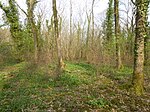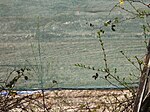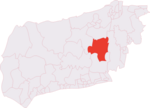St Peter's Church, Henfield
13th-century church buildings in EnglandChurch of England church buildings in West SussexGrade II* listed churches in West SussexHorsham District

St Peter's Church is a Church of England parish church in the large village of Henfield, West Sussex. Placed on the site of an 8th-century Saxon church also dedicated to St Peter, it was built in the 13th, 14th and 15th centuries, but was heavily restored and partially rebuilt in the 19th century. English Heritage has listed it at Grade II* for its architectural and historical importance. Services for the parish continue and also cover the parishes of St Giles', Shermanbury and St. Peter's, Woodmancote, which form its united benefice.
Excerpt from the Wikipedia article St Peter's Church, Henfield (License: CC BY-SA 3.0, Authors, Images).St Peter's Church, Henfield
Church Lane,
Geographical coordinates (GPS) Address External links Nearby Places Show on map
Geographical coordinates (GPS)
| Latitude | Longitude |
|---|---|
| N 50.9323 ° | E -0.2764 ° |
Address
St Peter's Church
Church Lane
BN5 9NY
England, United Kingdom
Open on Google Maps










